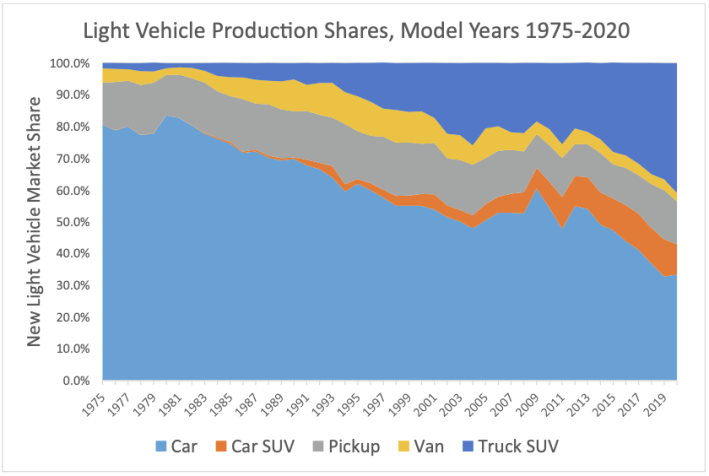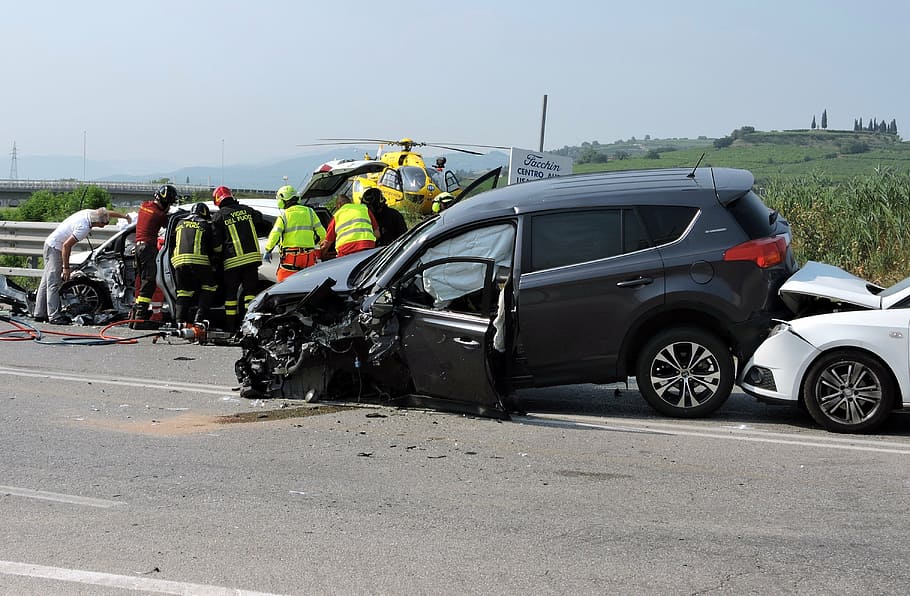Look out, below!
Children are eight times more likely to be killed if struck by an SUV as opposed to a standard passenger car — and SUVs cause a disproportionate amount of death across all age groups, and decidedly more so for African-Americans, a horrifying new study reveals.
According to the study from the University of Illinois at Springfield, passenger cars were the striking vehicle in 62 percent of pedestrian and cyclist crashes involving children, but caused roughly 19 percent of fatalities in those cases. Meanwhile, SUV drivers were involved in just 16.9 percent of crashes, yet their larger, heavier sport utes caused 40 percent of childhood fatalities.
There is evidence that the sheer size and poor visibility of SUVs are making it harder for their drivers to see kids: Children comprise 21 percent of all pedestrian and cyclist crash victims, but they comprise 26.1 percent of cases involving SUVs in the study — which looked at all crashes in Illinois in 2016-2018.
"This paper has demonstrated the high cost of large motor vehicles on pedestrian and cyclist injury severity, fatalities, and hospital [visits]," authors Mickey Edwards and Daniel Leonard wrote. "And once more, the most vulnerable among us seem to bear the greatest burden." (There is no reason to think Illinois is some kind of national outlier; its pedestrian fatality rate is roughly equivalent to the national average.)
The study is just the latest to confirm the connection between SUVs and the ongoing rise in pedestrian and cyclist fatalities since 2009 — a rise in fatalities that "coincides with the rise of large vehicles on American roadways," the authors show (see chart):

SUVs have become an even larger portion of the vehicle fleet since the end of the study period in 2018.
And the most recent pedestrian safety report from the Governors Highway Safety Association showed that deaths caused by SUVs grew 76 percent between 2011 and 2020, while deaths caused by passenger cars grew 36 percent.
Kids aren't the only ones endangered by mega-cars, according to the study. SUV drivers struck 14.7 percent of the pedestrians and cyclists, but were involved in 25.4 percent of the fatalities. Conversely, passenger cars were the striking vehicle in 62 percent of crashes, but caused just 38.4 percent of the fatalities.
There's also inequity in the victims of SUV drivers in Illinois: Black residents represented 27 percent of the victims of crashes despite comprising just 14.2 percent of the statewide population. The dangers to African-Americans is far worse when researchers removed Chicago from the data; in the Land of Lincoln, minus the Windy City, Blacks comprise just 10 percent of the population yet were 23 percent of the pedestrian and cyclist crash victims. And in Chicago itself, Blacks are 29.6 percent of the population but still 31 percent of the crash victims.
I track the characteristics of vehicle fleets across metros and compare them to changes in pedestrian deaths. Metros with more growth in large vehicles saw a greater rise in pedestrian deaths.
— Justin Tyndall (@justin_tyndall) July 26, 2021
No wonder a group of environmental activists are deflating the tires of SUVs. These vehicles are unsafe at any speed except zero.
Now that the dangers of SUVs have been long documented, there are some limited efforts to rein them in. In Washington, D.C., lawmakers want to dramatically increase the registration fees for extremely large vehicles. The National Transportation Safety Board has recommended that front ends of SUVs be redesigned. The agency has noted that SUVs have made drivers safer than they have been previously, and car companies and the federal government market the notion of occupant safety to potential buyers, with disastrous implications for those of us outside the car.
But federal regulators have done next to nothing. Even the Biden administration failed to close the "light truck loophole" in its emissions regs.
Tom Flood, a former auto marketer who now champions the fight against car dependency, said the new study "really says it all."
But Flood added, "To me, the auto manufacturers have continually pushed the boundaries of what is needed and essentially slowly and insidiously created demand for vehicles that are not practical just to fulfill the desires they have engineered. This has lead to where we are at now, a baseline and cost of entry point for consumers (as the sales show) of oversized vehicles that prey on the young and old and hunt everyone outside of these fortresses on wheels."






